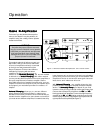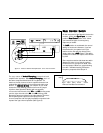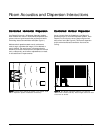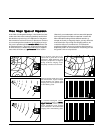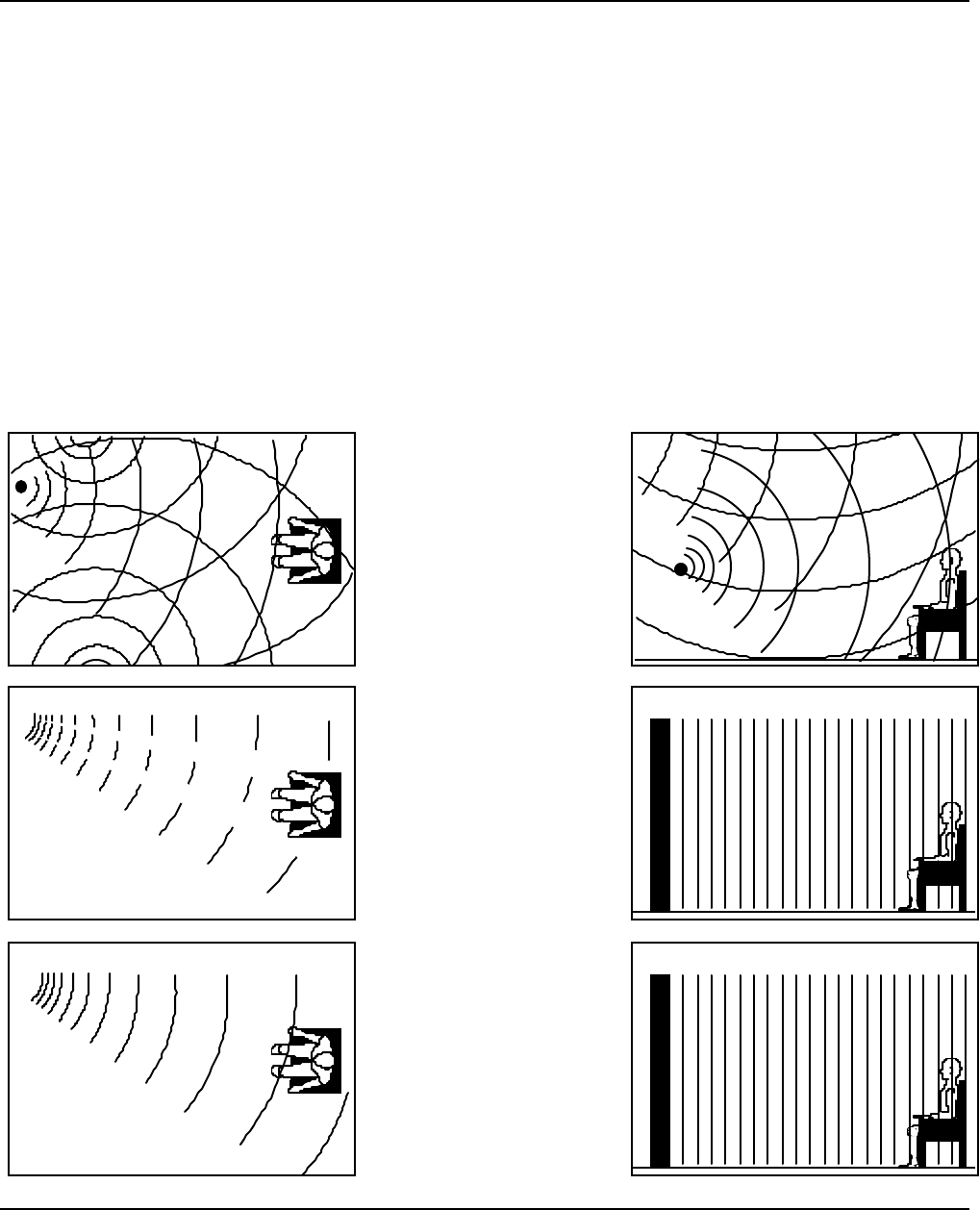
Page 17Sequel II User's Manual
Three Major TThree Major T
Three Major TThree Major T
Three Major T
ypes of Dispersionypes of Dispersion
ypes of Dispersionypes of Dispersion
ypes of Dispersion
In the field of loudspeaker design, it is a known fact that
as the sound wave becomes progressively smaller than
the transducer producing it, the dispersion of that wave
becomes more and more narrow, or directional. This fact
occurs as long as the transducer is a flat surface. Large
flat panel speakers exhibit
venetian blindvenetian blind
venetian blindvenetian blind
venetian blind effects due
to this phenomenon. This is why most manufacturers opt
for small drivers (i.e. tweeters and midrange) to approxi-
mate what is known as a
point sourcepoint source
point sourcepoint source
point source wave launch.
Historically, most attempts to achieve smooth dispersion
from large flat panel transducers resulted in trade-offs.
After exhaustive testing of these different solution at-
tempts, we found an elegantly simple, yet very difficult to
execute solution. By curving the radiating surface, we
create the effect of a horizontal arc. This allows the
engineers at Martin-Logan to control the high frequency
dispersion pattern of our transducers. That is why you see
the gentle curve on our products.
A controlled 30-degree cylindri-
cal wave-front, which is a
Martin-Martin-
Martin-Martin-
Martin-
Logan exclusiveLogan exclusive
Logan exclusiveLogan exclusive
Logan exclusive, offers optimal
sound distribution with minimal
room interaction. The result is solid
imaging with a wide listening area.
Even though they suffer from "vene-
tian blind" effect, angled multiple
panel speakers can deliver good
imaging, but only to specific spots
in the listening area.
As can be seen, point source con-
cepts invite a great deal of room
interaction. While delivering good
frequency response to a large lis-
tening audience, imaging is con-
sequently confused and blurred.






